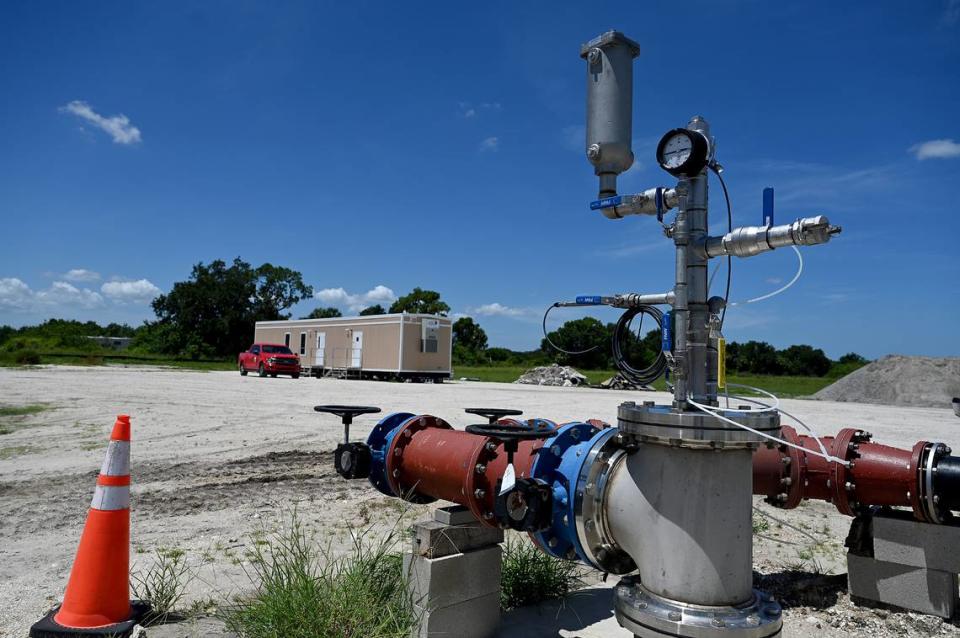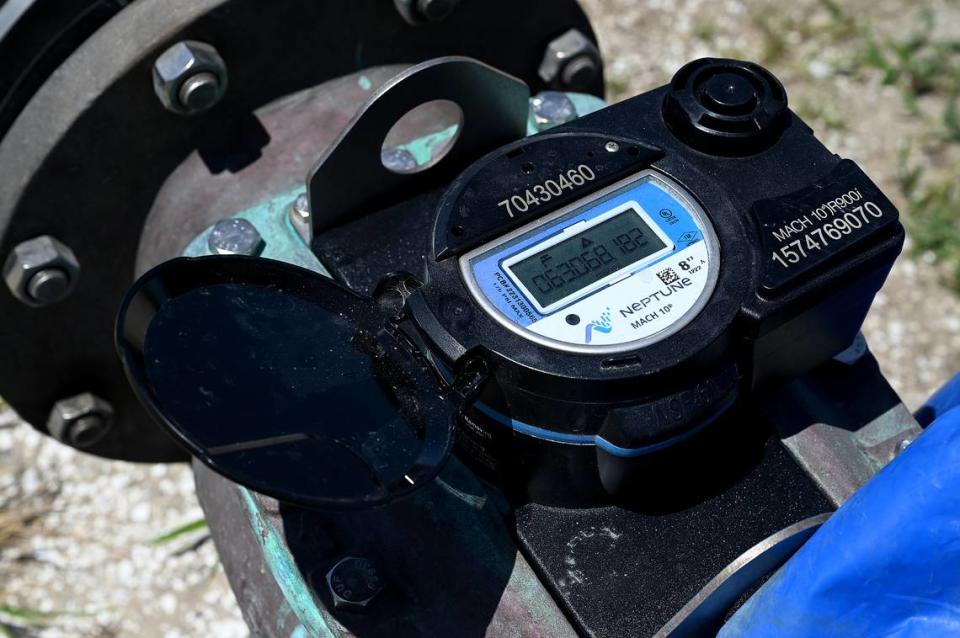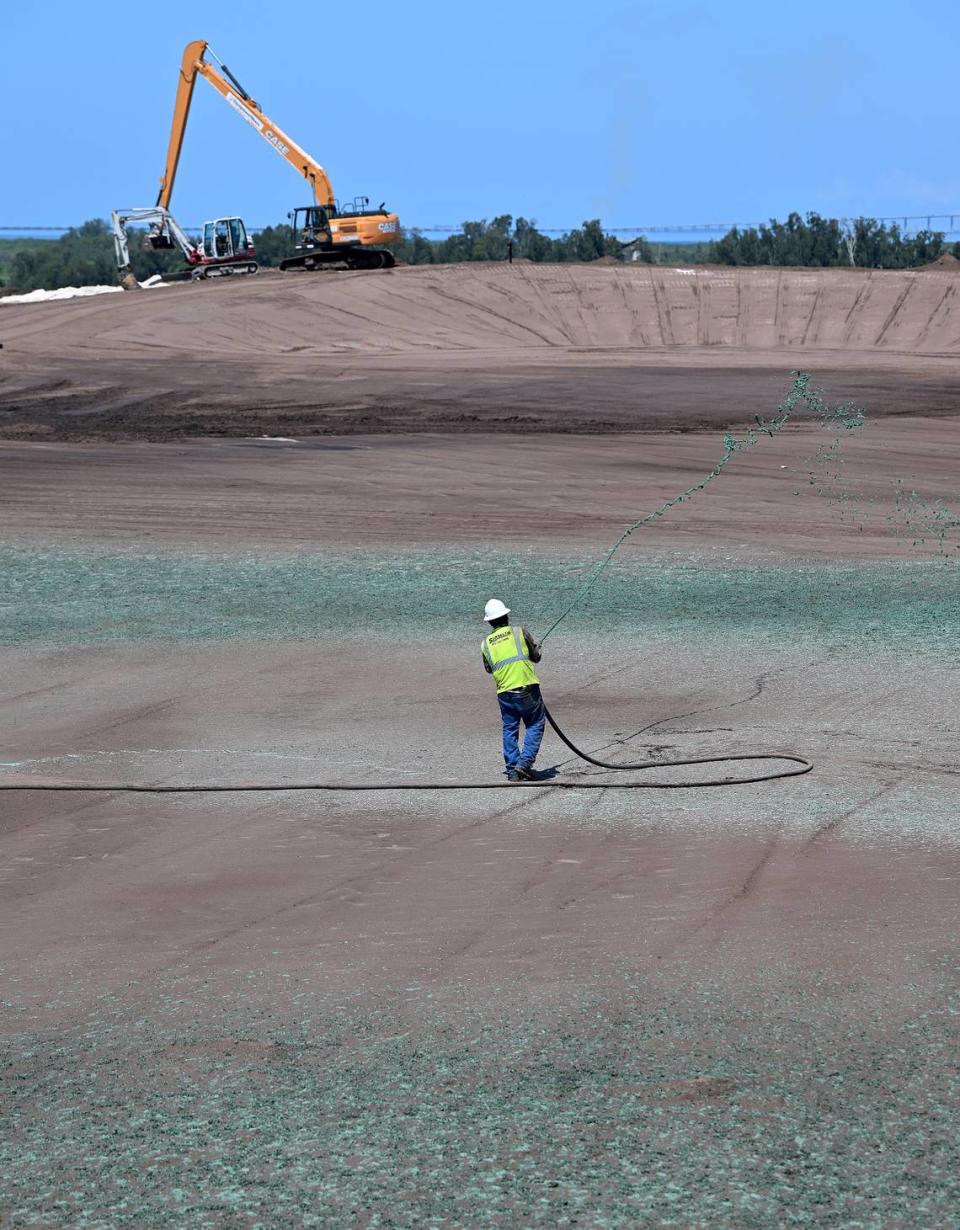‘Amazing progress.’ Piney Point operators celebrate key milestones toward site closure
In just over three months since activating the well, Piney Point’s site operators have drained 63 million gallons of contaminated water from the long-plagued facility.
Two years ago, the former phosphate processing plant made national headlines when a leak forced state officials to release 215 million gallons of that contaminated water into Tampa Bay, which experts believe contributed to an extended red tide bloom.
Ever since the site was abandoned by its former owners in 2001 and the state became responsible for its maintenance, officials have said that an underground injection control well is the most realistic method to dispose of the water. The well, which is owned by Manatee County Government on Buckeye Road, injects the water about 2,000 feet underground.
In previous presentations, scientists explained that, in addition to being treated before it goes into the well, the water will undergo a natural treatment process over the course of thousands of years before resurfacing in the Gulf of Mexico. Environmental advocates have pushed back on the practice, arguing that the well could endanger Florida’s drinking water supply, but site operators and state officials maintain that it is safe.
Following the April 2021 disaster, county officials worked with the state to quickly fund and construct the well. Site operators flipped the switch in April, allowing Piney Point to drain up to 1 million gallons of water per day.
Getting rid of the water on the site became a priority because it means a lower risk to public safety and local water quality, officials say.
“This project is one critical element of the necessary water disposal that will enable the ultimate closure of the Piney Point facility once and for all, permanently eliminating the threat from this site to the environment and the community,” the Florida Department of Environmental Protection said in a recent update.
Piney Point’s long-delayed closure, as well as the operation of dozens of still-active phosphate processing plants throughout the state, are a hot topic following Gov. Ron DeSantis’ recent approval of a bill that could pave the way for the gypsum material stored on these properties to be used in roadway construction.

‘Amazing progress’ at Piney Point
During a Wednesday morning interview and tour of the site, site manager Jeff Barath described “amazing progress” at the industrial property near Manatee County’s northern border along Tampa Bay.
“For the community, this is big. This is huge. We can manage problems on-site,” Barath said. “We haven’t had that in a long time.”
Thanks to the well and a lack of rain, the ponds at Piney Point are holding significantly less water than before. For the past two decades, those ponds have been a major source of anxiety for local leaders.
Piney Point started out as a phosphate processing plant in 1966. Over the course of nearly 40 years, the property built up large reservoirs of water that had absorbed nutrients through the technique used to convert phosphate rock into phosphorus, a key ingredient in fertilizer.

The nutrients in the water — nitrogen, phosphorus and ammonia — made the water unfit to be released into local waterways without undergoing a rigorous cleaning process.
Those ponds sit atop large mounds of gypsum, a slightly radioactive byproduct of phosphate processing. The gypsum mounds are covered with thick plastic liners to prevent the water from coming in direct contact with the material.
Florida pays $185 million for Piney Point closure
A tear in that liner sparked the April 2021 emergency situation, resulting in the controlled release of water into Tampa Bay. Later, Gov. Ron DeSantis ordered the closure of the Piney Point site. To date, the state has put $185 million toward site closure.
Because the ponds cover dozens of acres on the property, every inch of rainfall has a dramatic effect, adding 3.6 million gallons of water to the site. In recent months, the site has been spared from heavy rainfall.
“We are making amazing progress — even better than I hoped back in April,” Barath said, referring to when the well began accepting water earlier this year.
By the end of July, crews expect to have a proof of concept for a permanently closed gypsum stack. Old Gypsum Stack South, one of several ponds on the site, has been outfitted with pipes to drain excess water, filled with soil and covered with grass seeds.
“This is what a closed gypsum stack will look like,” Barath said.
Despite recent progress, Piney Point is still at least 18 months away from final closure. There are still millions of gallons of water that need to be treated before entering the well, and the process of capping the ponds once they are empty is a delicate one, operators say.


